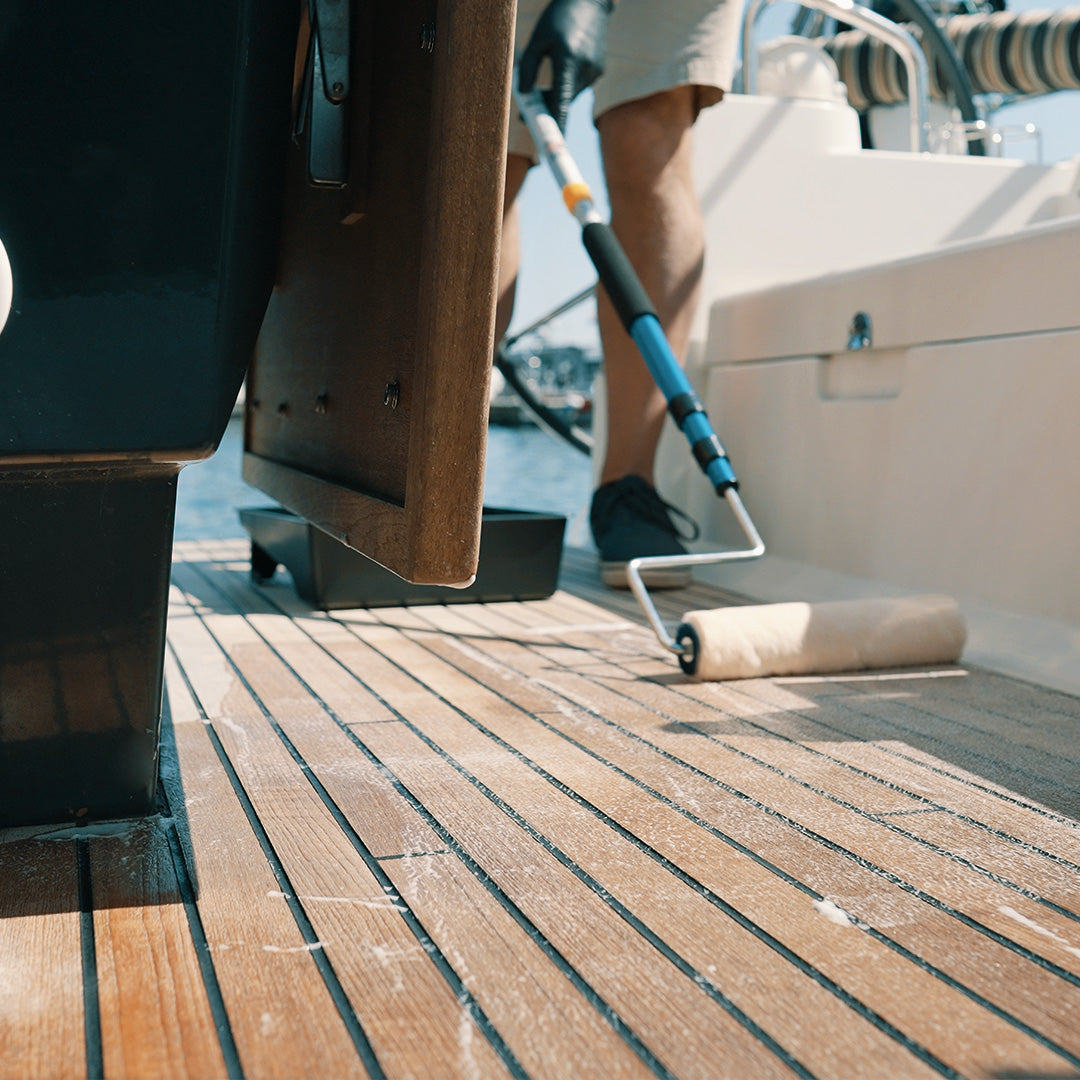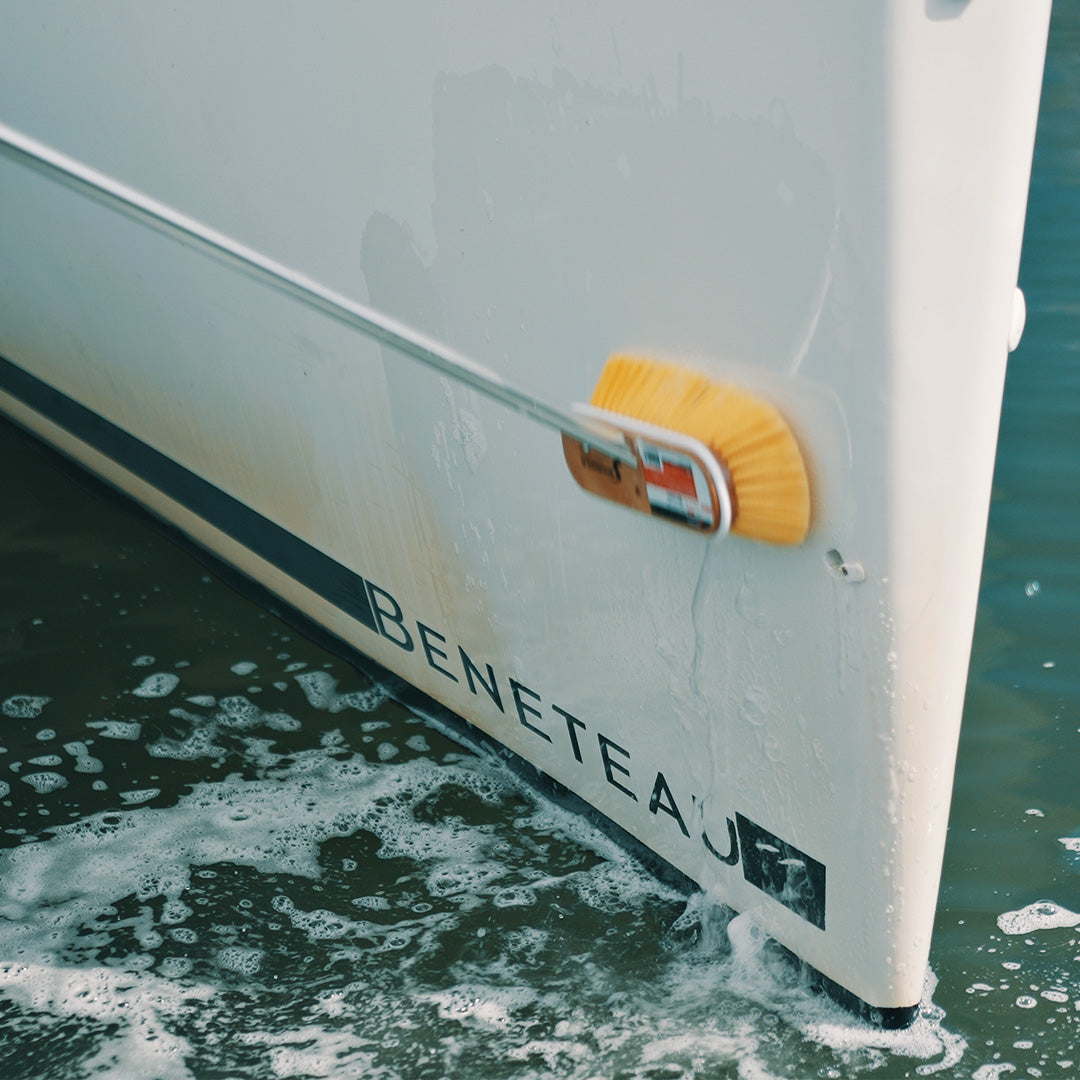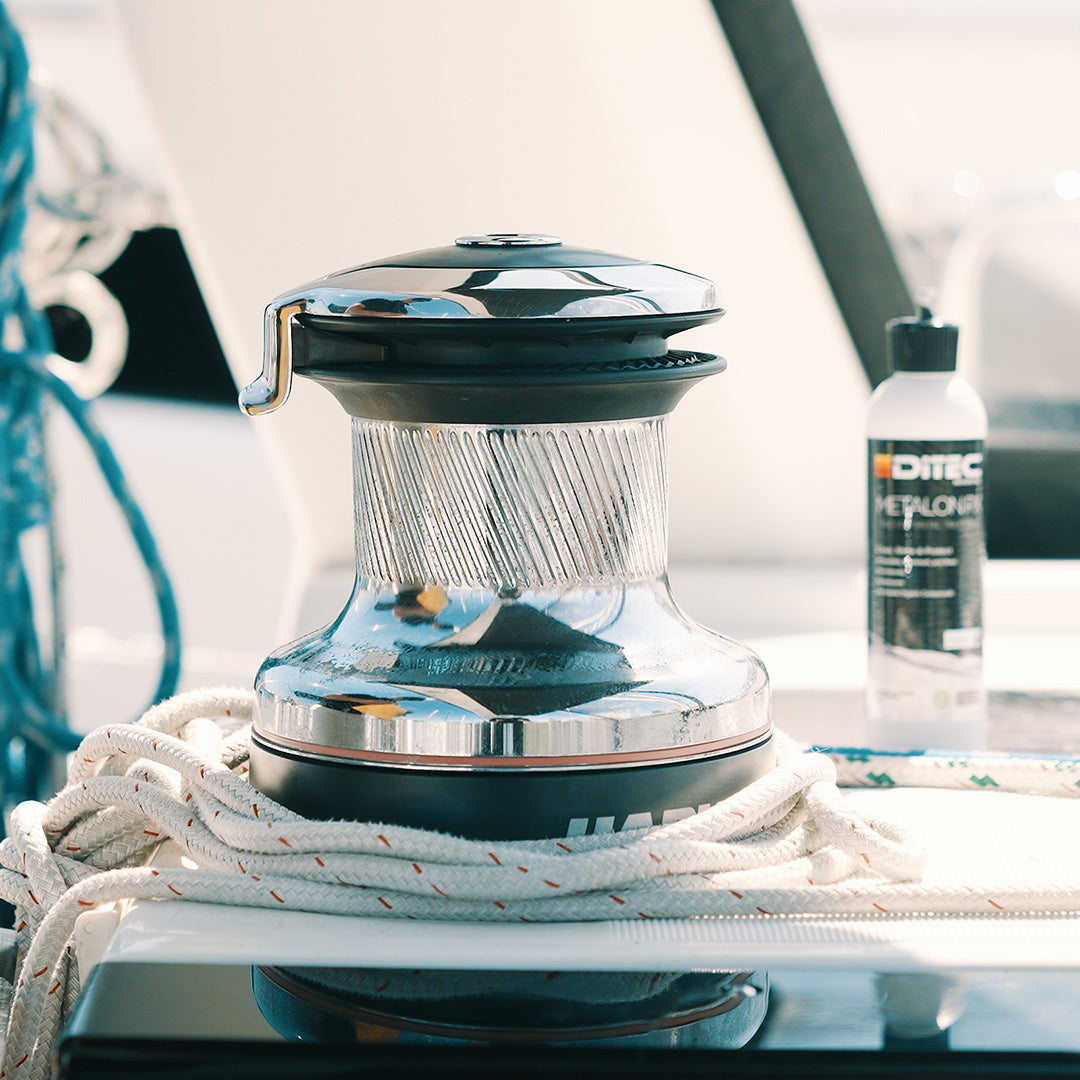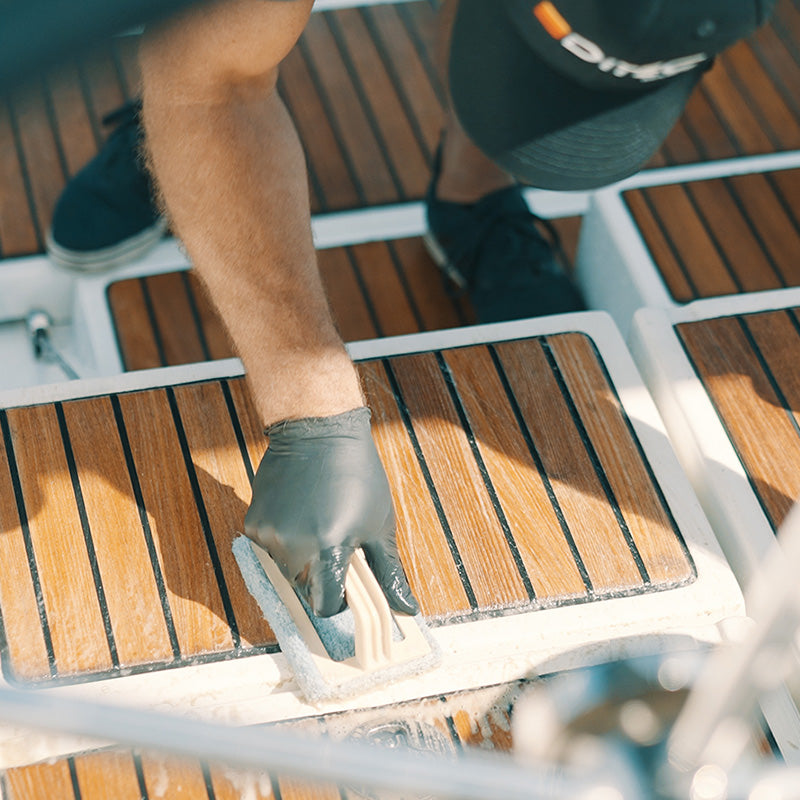A boat can be a great addition to your life. Whether you’re a die-hard angler or just looking to hit the open water on a speedboat for a little fun, there’s a boat for almost everyone. Like any vessel or vehicle, of course, your boat is going to need to be cleaned and detailed from time to time to keep it in its best condition and keep it looking as good as it did when you brought it home.
Boat cleaning is a little more unique because you have to consider environmental aspects like water (saltwater or freshwater), wind, and other weather elements in the care, protection, and cleaning of your vessel. In this guide, we’ll go over everything from basic cleaning to detailing tips to get a professional finish without the professional cost. Plus, working on your own boat can give you a sense of pride and accomplishment that you just don’t get from sending it in for a cleaning or detail job.
Cleaning Your Boat
Cleaning seems simple enough, but if you’ve got a boat, you have a whole new set of rules to learn. The very first step to keeping your boat clean and in good condition is to regularly rinse off debris and grime so that it doesn’t have time to build up and cause damage or create difficult-to-remove residue. Even if you don’t follow every rinse with a wash, you can still extend the life of your boat by keeping it clean as much as possible.
All you need for this is a standard garden-variety hose with a good nozzle, but you can add a pressure washing handle or use a pressure washer machine for extra cleaning power. You don’t have to rinse your boat every time you take it out, but every few trips or so, it should see a good hosing.
Best Boat Cleaning Supplies
Marine soap is designed to handle all the dirt and grime related to fresh and saltwater boating, and should be the first item on your shopping list. There are many brands of soap on the market and while most will do the job, some work better than others. Plus, some products are designed for specific uses.
You should be on the lookout for an eco-friendly soap, first and foremost, so that you’re not doing any damage while cleaning your boat. Especially since it’s more than likely the soapy water you wash your boat with will drain down into the ground.
In addition to a high-quality, natural soap, you should also have the following equipment on hand for the boat washing day:
- Cleaning brushes that are durable enough to get the job done, but not so rough they’ll damage the finish or gel coat. Marine-specific brushes are made to withstand repeated exposure to sun and saltwater
- Bucket(s) that will be large enough for whatever scrub brushes or mops you choose
- Washing pads, sponges, chamois cloths for buffing, and plenty of towels
Browse DiTEC Marine Cleaning Accessories and Applicators
Whether you store these items on your boat or at home, keep them in the same place and somewhere handy so that they’re accessible when you need them.
The first thing you should do when it’s time to wash your boat is rinse any loose debris and make sure that the surface is wet so that it is easier to clean. Attempting to use a scrub brush on a dry surface can also cause damage, so never scrub your boat when it is dry.
Start from the top down and divide it into sections so that you can wash and rinse before things have time to dry. If you attempt to wash the entire boat at one time, it’s likely that portions will dry with soap on them before you can get back to rinse them in time.
Get a bucket of soapy water going with the boat cleaner that you’ve chosen to use, and use your scrub brush and sponges to wash all the different surfaces of the boat. Don’t forget the outboard and lower drive, if you have them, where buildup can easily lead to corrosion and damage. Use the same solution for the entire boat and rinse each section thoroughly once you have scrubbed it well.
Once everything has been washed and rinsed, it’s time to break out the drying mops or chamois cloths to soak up excess water without scratching the surface. Avoid water spots by drying immediately after washing, even if you wash, rinse, and dry one section at a time.
Keep in mind this is just a general washing. We’ll get into detailing elements like windows, chrome, instrument gauges, seats, and other aspects of your boat that might need cleaned in the next section.
The top general boat cleaners for routine washing include:
Buffing and Waxing
Although some people might think that this section would fall under “detailing”, we would be remiss not to tell you that buffing and waxing are a regular part of washing your boat. You may not need to reapply wax every time you wash, but you should do it regularly to protect your boat’s exterior and keep it looking like new.
Once your boat is dry, you can use buffing cloths or a rotary buffer to prep the surface of your boat for waxing and remove any oxidation left behind after the wash. You can choose to do this in sections like you did with washing or to buff the entire boat and then follow with wax once you’re done. As long as you’re being careful to cover every surface and buffing off the excess wax as you go, you should get a uniform finish all around no matter how you divide the work.
Gel Coat Maintenance
Fiberglass boats have a coating that covers the deck and hull that is known as gel coat. This is a colored, scratch-resistant polyester resin that protects the fiberglass from unnecessary damage and wear. Normal wear and tear can be expected over time, but there are some things that you can do when it comes to maintenance to ensure that your boat and its gel coat look their best at all times. Here are some tips to keep in mind:
After every saltwater trip, you need to rinse all of the fiberglass sections of the boat with fresh water. It’s not about dirt buildup. It’s about getting the salt residue off, because those crystals can magnify UV rays and lead to faster wax or gel coat breakdown.
You should wash the hull of your boat with a gentle degreaser after trailering to remove any road grime and debris. Also, before you start scrubbing, hose off any excess debris to avoid scratching or damaging your wax job or the hull itself.
Try to park in a shade area when trailered or cover the exposed fiberglass to protect it from UV rays when not in use. UV rays are one of the leading causes of damage and deterioration to waxing and gel coats.
If you find yourself needing to use a strong degreaser after you’ve waxed your gel coat for the season, go ahead. However, be prepared to re-apply the wax immediately after you finish cleaning because the same acids that are used in degreasers to remove stains also melt the wax right away.
3M and DiTEC Marine make great gel coat and fiberglass wax and cleaning products, including those designed for light and heavy-duty use. Other leading brands have products available, as well. Just make sure that you’re shopping for gel coat cleaners and waxes because they are specific to this application.
Detailing Your Boat
If you want to go above and beyond the average wash, you can do that once or twice a season to keep every last inch of your boat looking newer, longer. Detailing is more than just washing your boat. This process involves going over your boat with a fine-tooth comb to get it looking like new all over again. From the rub rails to the instrument panels, some parts need a little more TLC than others.
A typical boat detail should include things like:
Cleaning all glass – including the windshield and any mirrors or windows, which can be done easily with a vinegar/water solution that is just as effective as chemical glass cleaners.
Cleaning and polishing all chrome trim and metalwork with a high-quality cleaner and metal wax. If you have teak on your boat, you should clean it with a mild detergent and then apply teak oil to keep the wood in good condition and looking great.
Vinyl surfaces (seating, etc.) can be cleaned with a damp cloth to begin. If you feel that you need more cleaning power, there are vinyl cleaners from DiTEC Marine, 3M, Bass Pro Shops, and other leading brands that can get the job done. Mildew stains can be treated with diluted ammonia (4-to-1 water ratio).
Interior cleaning, if you have a cabin on the boat, that should include carpet cleaning and other surface cleaning inside of your cabin. Every nook and cranny should get the special treatment when you’re doing a full detail.
Cleaning and degreasing the engine should be done at least during winterization, once per season. This can be performed by mechanics, or the more experienced boaters can take on the task themselves. If you are doing the work, choose a quality cleaner like Boeshield T-9 or WD-40. For excessive buildup, a stronger degreaser like Gunk might be a good choice. In the event you have to clean areas that require lubrication, reapply when you’re done cleaning so that you don’t damage the engine.
Supplies
Detailing supplies are certainly not in short supply. Brands like DeWalt, 3M, and Meguiar’s all have detailing kits, which offer various collections of cleaning and detailing supplies and products. These could include everything from cleaners to chamois cloths, brushes, buffers, and more. You can choose to purchase a detailing kit to get everything in a single bundle if you don’t already have any of the supplies on hand. If you do have some cleaning supplies already, it’s probably best to only add what you’re missing.
Here’s a list of what should be in your boat detailing kit:
- Microfiber towels and/or chamois cloths
- Applicators and brushes for various surfaces and cleaning needs
- Sponges and mops
- Polishing and waxing tools or cloths
- Wash buckets
- A vacuum or blower for carpets or debris removal
- Cleaners and degreasers
- Polishes and waxes
- Gel coat protectant (if your boat has a gel coat)
- Stain removers
- Power washers or water spot removers (optional)
Professional detailing is an option for those who don’t want to do the work themselves. Keep in mind, of course, that in exchange for someone else doing the work, you should expect to pay between $8 and $40 per square foot for a professional detailing job. The exact rate will vary on the type of boat, the size of the boat, and what needs done. Be sure to get estimates to compare rates if you go this route. Often, most boat owners enjoy doing the work themselves and would rather invest their own time than the extra money to have a professional do the dirty work.
Saltwater Protection
If you’re boating in saltwater, this is an important topic to cover. The biggest difference in freshwater and saltwater boating is the speed with which you need to rinse your boat clean after an excursion. As mentioned above, you should always rinse your boat after a saltwater excursion to remove excess residue that can lead to damage or corrosion. You should also flush the engine with fresh water to make sure no salt residue sits inside the compartments, where it can lead to rust and other damage.
Wrapping Up
Part of owning a boat is taking care of your vessel. You need to have the right tools and cleaners for the job, so keep this guide in mind. Something as simple as regular washing and occasional detailing can keep your boat looking and running like new for a lot longer. Now that you know how to do that, grab your tools and get to work.







